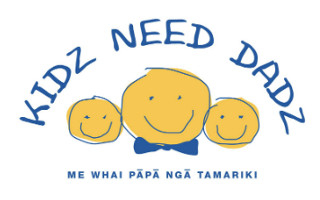Your On Your Own
When Jack* tried to protect his daughter from her abusive mother, no-one told him about the Domestic Violence Act and Protection Orders.
Jack first became aware that something is not quite right, when his daughter Monica* had to be hospitalised at about 6 weeks of age because of undernourishment.
Even though his parents had voiced some concerns to him about his wife Helen’s* treatment of their daughter, he had thought Monica was just “slight” like himself and her mother.
After assessment, however, the doctors told him they suspected child neglect.
Monica was released after 10 days, after a routine of formula feeding had been established, and on condition that she be presented weekly. Monica’s mother was referred to an early intervention rogramme as she was “a mother not enjoying her baby”, according to the social worker appointed to visit her regularly.
But hospital appointments weren’t kept and Monica’s mother refused to let the social worker in on several occasions.
Jack was working fulltime at this time and “often when I arrived home from work Helen would be in a terrible mood.
A common complaint was that I had woken Monica by closing the front door in the mornings disturbing Helen’s sleep “When Monica was fed solids, Helen would usually yell “open your f** mouth” and a lot of other obscenities.”
Jack and Helen split up when Monica was about 2 years old. Shortly after, Helen rung his mother telling her “I can’t cope. Monica won’t stop crying, I want to strangle the bitch” – and herself. At this stage Jack was becoming seriously concerned for Monica’s safety and saw a solicitor for legal advice on how to best protect Monica.
He presented a consistent story, backed up by statements by his mother, brother and father about serious emotional abuse they all had witnessed independently.
“At first I felt I was believed, and something will be done about the situation now.” Jack believed the only way of protecting his daughter was to obtain full custody of her.
But despite hearing consistent stories of child abuse witnessed independently by several different persons, his solicitor did not tell him about the Domestic Violence Act and the possibility of taking out a Protection Order.
This would have protected Monica instantly and would have left her in his care at least for the time being. Instead she recommended that Jack “retain Monica in my care when she stayed with me next and use the police to prevent Helen from trespassing.”
Jack knew of “Non-Molestation Orders” as Protection Orders used to be called, because a cousin of his had taken one out on her husband a few years before, “and on very good grounds”.
But despite having been subjected to physical abuse by Helen himself he did not believe an Order would apply in his situation, and he was worried that it may remove him from his child rather than the child from the mother, which was his main concern. No-one had told him about the possibility of taking out a Protection Order on behalf of his daughter.
During the following custody proceedings Monica disclosed physical abuse by her mother against her to a child psychologist, who believed her story.
In his report to the court he did not detail the disclosures – he was not directed by the court to comment on this – but said that his interviews with the child confirmed the story put forward by Jack.
But Jack’s and Monica’s story does not have a happy ending.
In disputed custody cases, the Family Court appoints a lawyer representing the interests of the child, which normally becomes the most influential person during the proceedings. When this Counsel for Child was appointed, Jack’s lawyer suddenly retracted and no longer supported his application for full custody.
“The Counsel for Child was not interested in my side of the story”, says Jack. ” She said to me: ‘The best place for a child is with it’s mother, even if the mother is obusive.”
When challenged on it she replied that she “wouldn’t condone [the mother’s] behaviour”, but, according to Jack, she also said “I’m not prepared to consider [the abuse]. I want you to return her to the mother now!”
The Counsel for Child talked to Helen’s family, but refused to talk to Jack’s.
When she came to interview Jack, who was at the time living with Monica at his mother’s house, she insisted for her, and his father, who was also present for support, to leave the room.
When she found Monica happy and settled, she told Jack that Monica “wouldn’t be happy if she didn’t have a good mother”. In her report she recommended full custody for Helen, despite Helen’s well documented history of mental health problems.
Jack’s solicitor was now getting cold feet.
She filed sworn statements of Jack’s family, outlining the abuse against Monica, only two hours before the hearing, and Jack believes she did so full knowing that they would be rejected as evidence because they were put in so late, leaving Helen’s solicitor no time to respond.
“Several other prominent solicitors in Christchurch were surprised when I told them of the late filing of affidavits and assured me any solicitor knows a judge would not allow them.”, Jack says. During the hearing, when Jack’s mother, father and brother were waiting outside ready to testify, his solicitor turned around to Jack and told him: “You’re on your own”.
Only after the psychologist’s report came in, supporting the view that serious abuse was, indeed, going on, Counsel for Child changed her position and supported shored custody with equal access of both parents.
Monica is now four years old and Jack has given up any hope that the New Zealand justice system would act to protect his daughter. He has gained shared custody and hopes that “the time with me will balance out any negative influence from her mother”.
This seems all they can hope for.




